The former Ellinger Palace is located in a side street of Terézváros, a few minutes' walk from Kodály Circus, at 2/B Németh László Street. At first glance, the facade in need of renovation does not suggest the “taste duel” of the former music-friendly owners, violinist and teacher Gusztáv Ellinger (1810–1898) and architect Ferenc Novák (1848–1903).
The most complete contemporary description of the house can be read in the obituary published in the Pesti Napló on the day after the death of Gusztáv Ellinger, on 6 March 1898:
“He died there in the ornate palace on Kis János Street, which half was his property. The other half belongs to the architect Ferenc Novák, who is also a fan of music. And this was also expressed in the architectonics of the building. The front of the building is decorated with two relief statues: Mozart's and Dvozsák's. The statue of Mozart was demanded by Ellinger on the facade of his palace, and that of Dvorzsák by Novák, a music lover of Czech descent. And old Ellinger, when he explained this musical dualism to his students, never failed to add, "I have great respect for Dvozsák, but I did not erect a statue for him."
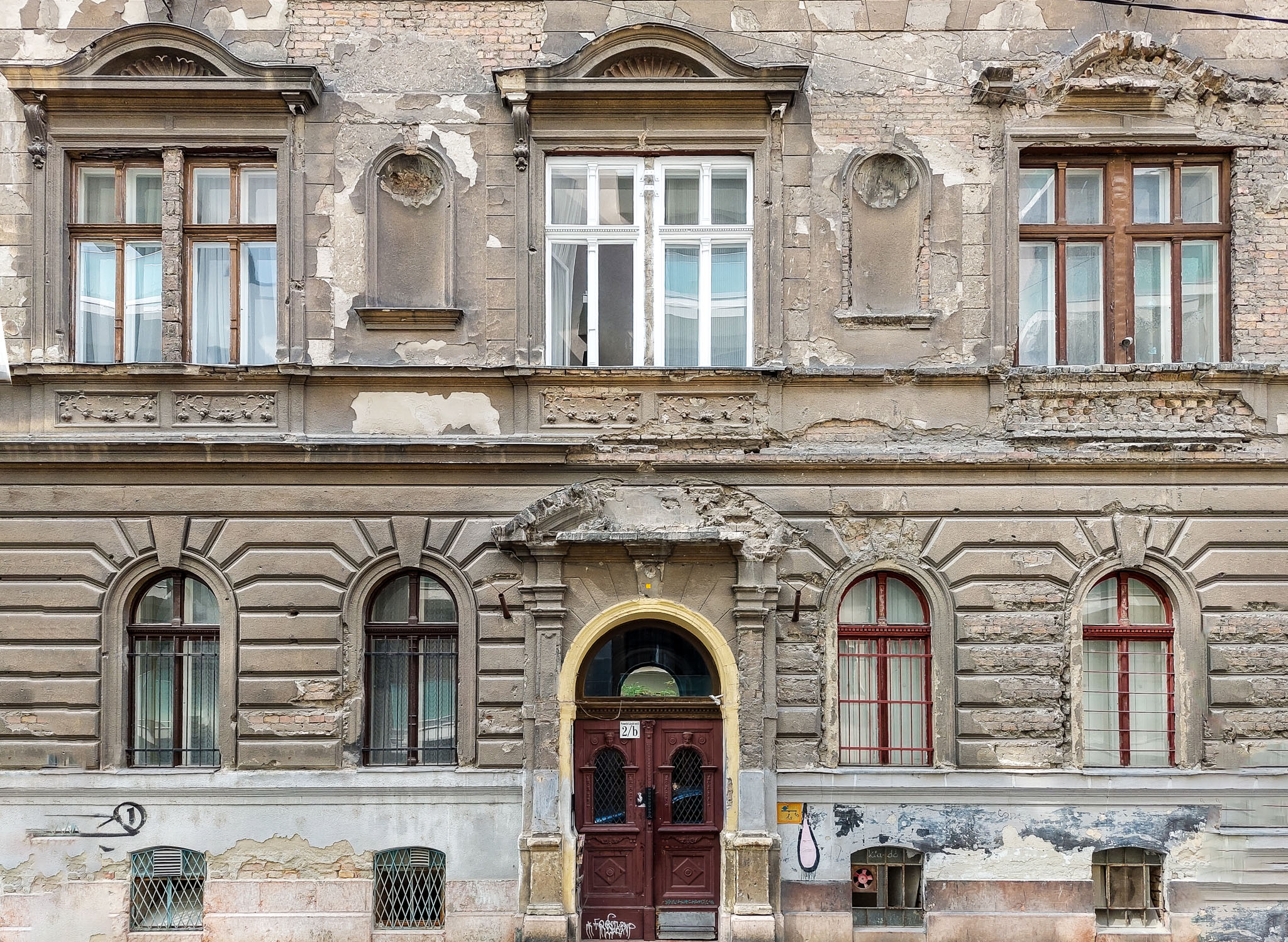 The facade of the Ellinger Palace with the site of the former statues of Mozart and Dvořák in Terézváros, at 2/B Németh László Street (Photo: Balázs Both/pestbuda.hu)
The facade of the Ellinger Palace with the site of the former statues of Mozart and Dvořák in Terézváros, at 2/B Németh László Street (Photo: Balázs Both/pestbuda.hu)
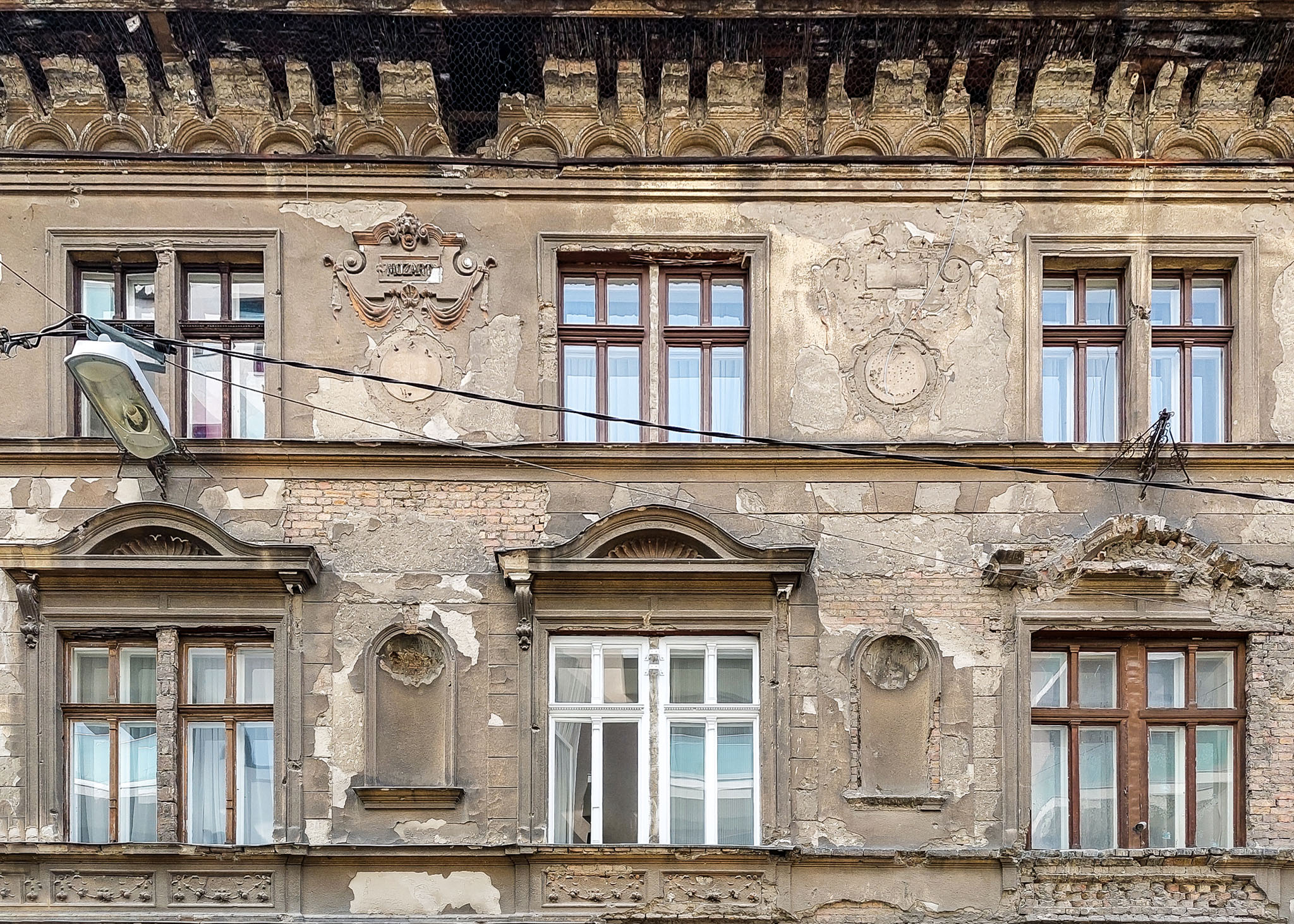 The remaining upper part of the Mozart relief and its inscription can still be seen on the dilapidated facade (Photo: Balázs Both/pestbuda.hu)
The remaining upper part of the Mozart relief and its inscription can still be seen on the dilapidated facade (Photo: Balázs Both/pestbuda.hu)
Above the entrance, on each side of the first-floor window, in two semicircular depressions, the location of the statue of the two composers can still be seen today. Above the statues, on the second floor, were the reliefs: only the former outlines of Dvořák can be seen, while Mozart's upper part and inscription remained.
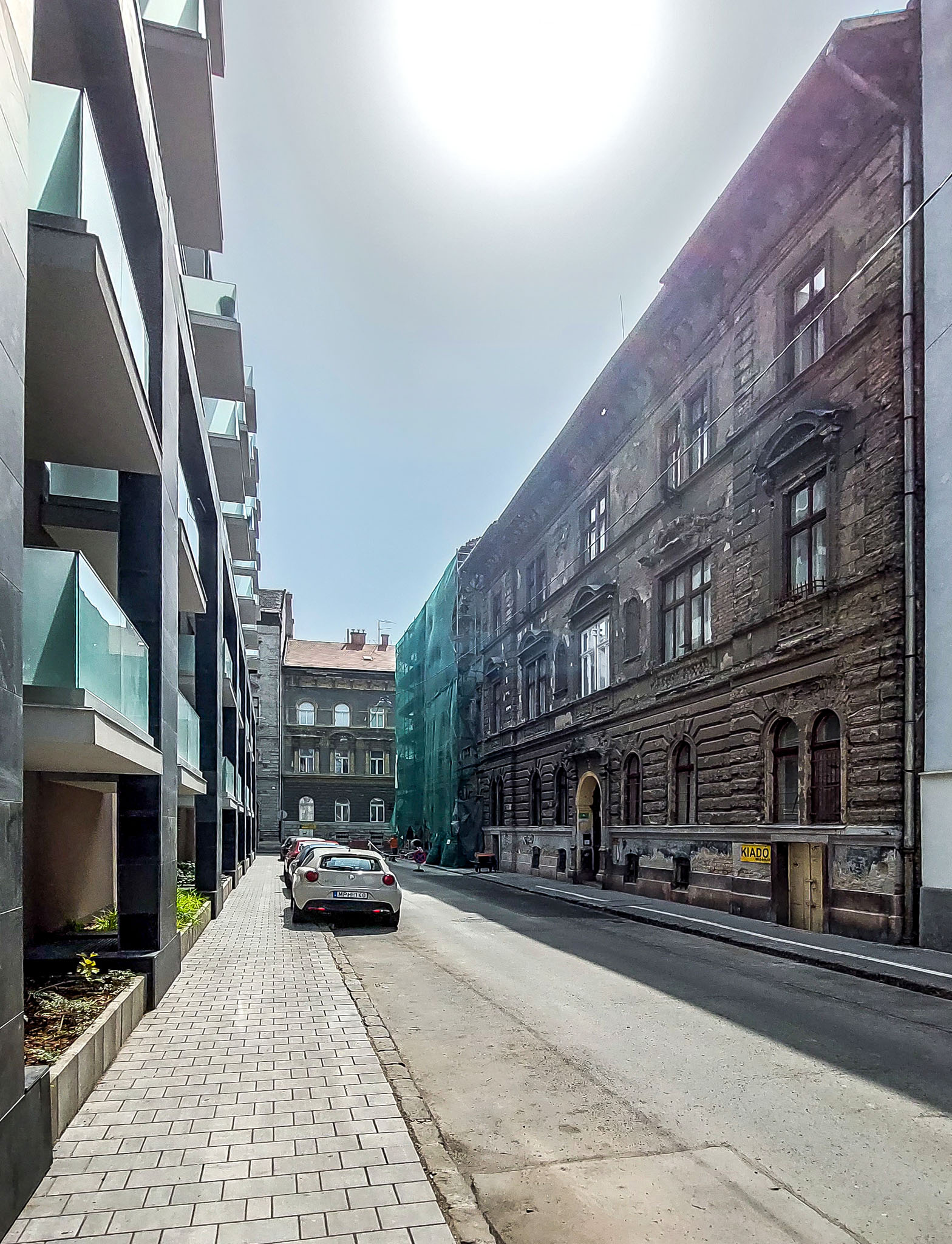
Half of the former Ellinger Palace was owned by violinist and teacher Gusztáv Ellinger, the other half by architect Ferenc Novák (Photo: Balázs Both/pestbuda.hu)
The interior of the Ellinger House, the staircase and the courtyard reflect the former atmosphere of the palace in a renovated condition. The real surprise of the ground floor foyer leading to the courtyard is the two musical putto sculptures: one playing on a pan flute, and the other playing the lute. The symmetrically arranged sculptures are located on two sides, in a recess.
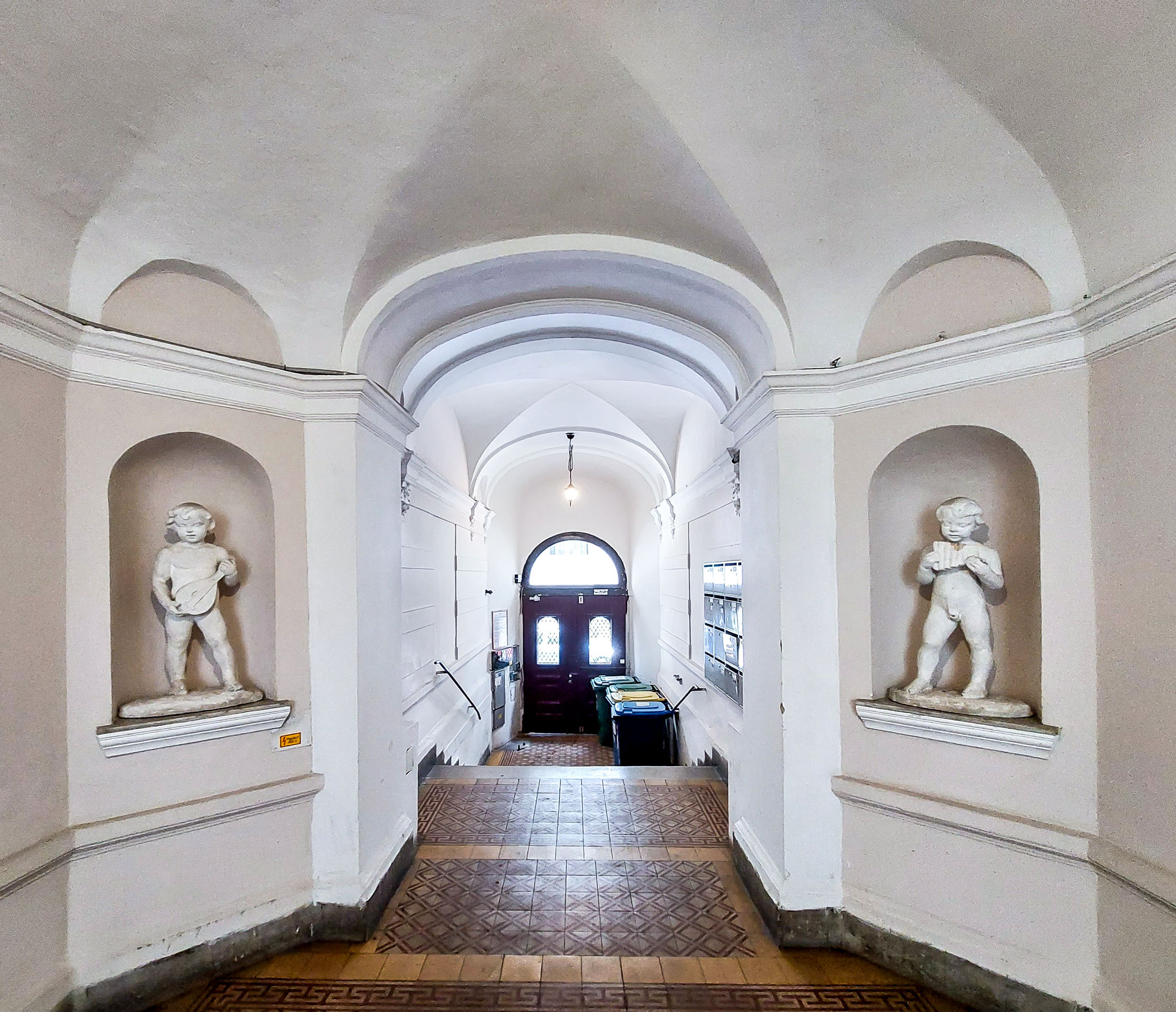 The two musical putto sculptures are still in the Ellinger Palace (Photo: Balázs Both/pestbuda.hu)
The two musical putto sculptures are still in the Ellinger Palace (Photo: Balázs Both/pestbuda.hu)
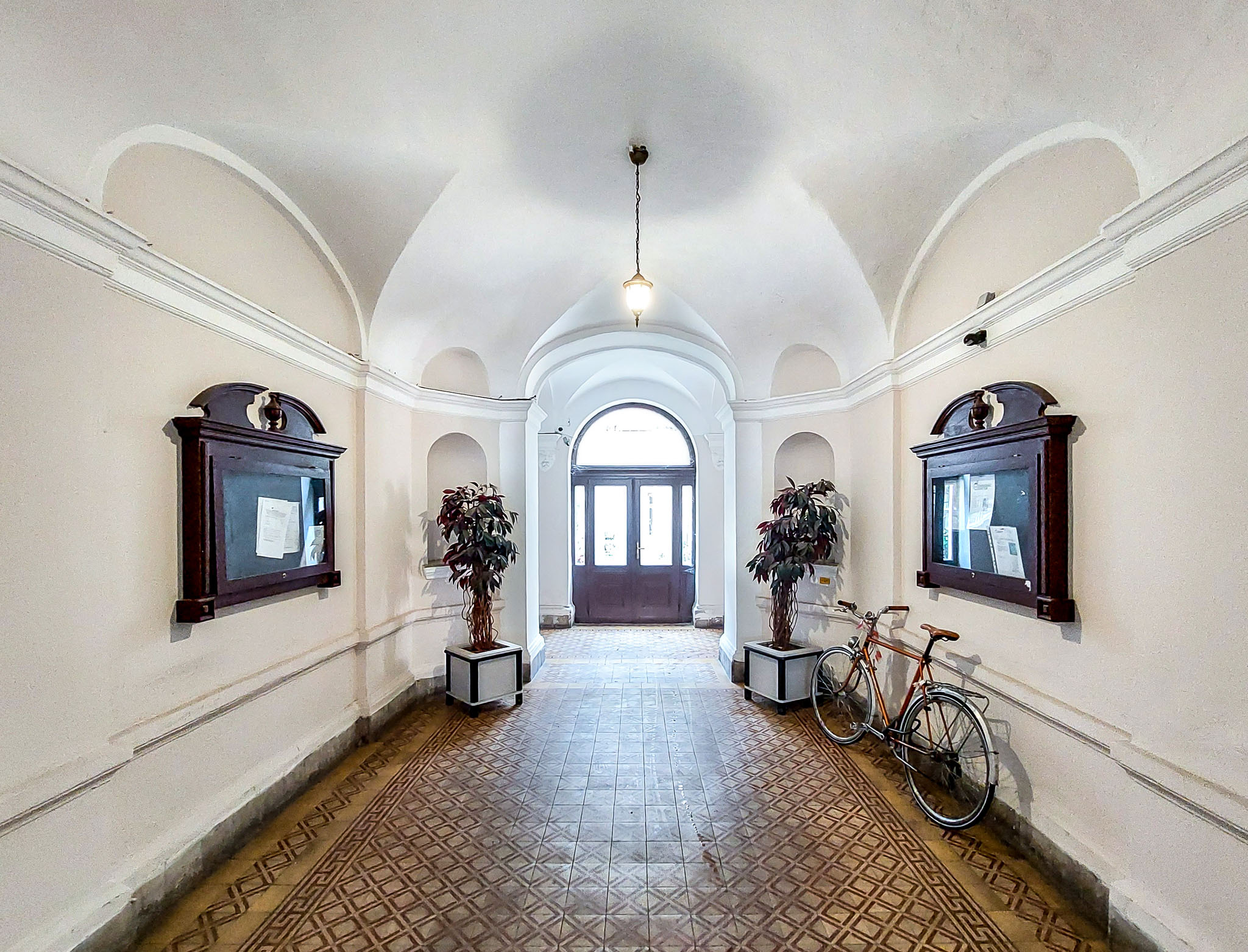 The building was designed by János Jedlicska (Photo: Balázs Both/pestbuda.hu)
The building was designed by János Jedlicska (Photo: Balázs Both/pestbuda.hu)
The designer of the palace under 2/B Németh László Street (then 2/B Kis János Street) was the architect János Jedlicska. His name is also associated with the houses built for his own family at 25/C Damjanich Street, at 61 Nefelejcs Street, and the Vermes Palace in Szabadka (today's Subotica, Serbia). Gusztáv Ellinger bought the palace in Terézváros from him on 9 April 1892, at the age of 88, and then he barely moved in, he sold half of the ownership of the house on 23 May 1892 to the Czech-born architect Ferenc Novák (1848 - 1903) who furnished his architect's office here.
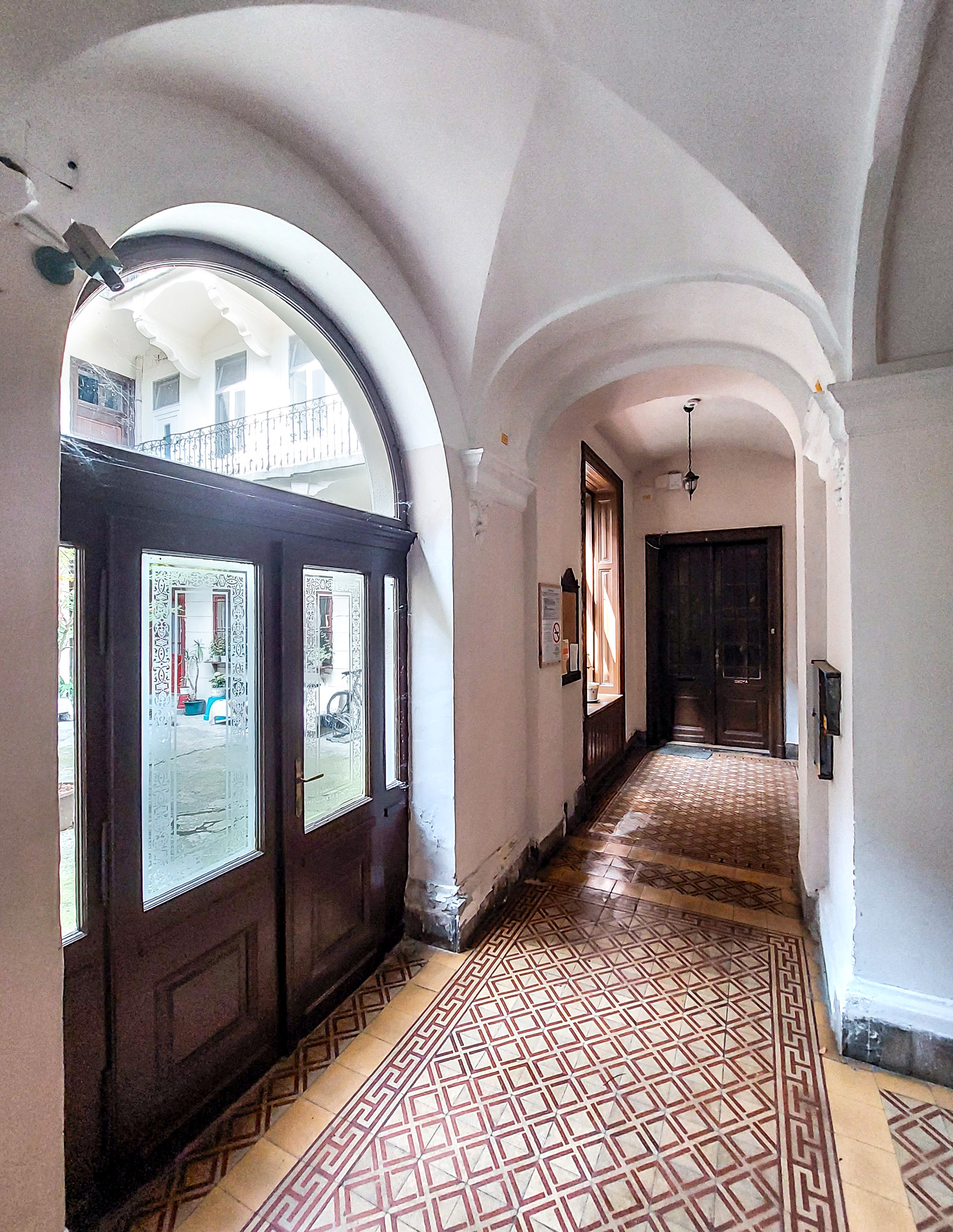
The ground floor corridor and the courtyard exit (Photo: Balázs Both/pestbuda.hu)
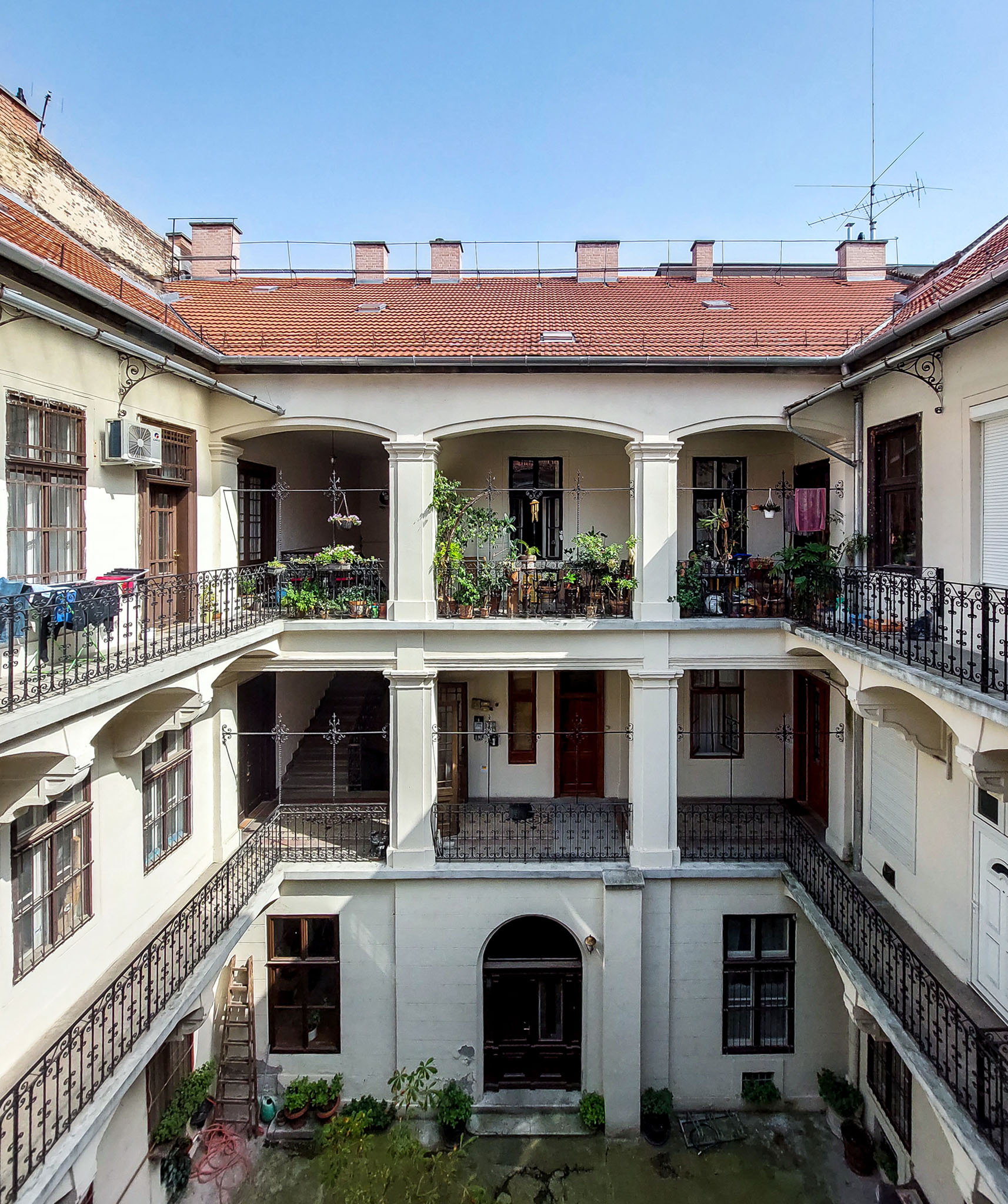 The courtyard of the former palace today (Photo: Balázs Both/pestbuda.hu)
The courtyard of the former palace today (Photo: Balázs Both/pestbuda.hu)
From a violinist to a music teacher
The palace was named after Gusztáv Ellinger, the son of the Klezmer musician of Óbuda, Jakab Ellinger, who already performed as a child. His brother, József, also wrote his name in music history as an internationally renowned tenorist who sang the role of Ban Bánk in the National Theatre for the first time.
Of the Klezmer musicians, Gusztáv Ellinger was the only one to join the orchestra of the Buda Castle Theatre. He began his second year at the Vienna Conservatory under the direction of Joseph Böhm, who participated in the Beethoven world premiere. Finished with honours, he was contracted in 1829 by the Hofoper in Vienna, which operated in the former Kärthnerthortheater building on the plot behind today's Staatsoper.
It is true that he was “only” a member of the company for one season, until June 1830, but that one year was precisely the Vienna golden age of the bel-canto era. Gusztáv Ellinger participated in the Vienna premiere of Rossini's Vilmos Tell, the young Meyerbeer's opera, The Crusader in Egypt and the gala performances of Giuditta Pasta and Giovanni Battista Rubini, the star couple of the age, and the Vienna premiere of Bellini's opera, The Pirate. As a violinist, Niccolò Paganini was his role model, whose play he admired live.
After the Vienna season, Gusztáv Ellinger came home to Hungary with priceless artistic experience to pass on his knowledge to young people. He taught as a private teacher in his home at 6 Egyetem Square in the city centre. His pedagogical talent is proved by the fact that he saw the talents of József Joachim, Lipót Auer, Jakab Grün, Ödön Singer and Jenő Hubay in their childhood. He prepared their international careers with understanding care: with the exception of Hubay, who belonged to the later generation, they all continued their studies with Ellinger’s former Viennese teacher, Joseph Böhm.
.jpg)
Gusztáv Ellinger's best-known students: József Joachim on the left (Source: schumann-portal.de), Lipót Auer on the right (Source: wikipedia.org)
Joachim also made a significant contribution to Auer becoming an artist. Nothing proves their results better than that Brahms wrote his violin concerto for Joachim, and Tchaikovsky wrote his for Auer. Ellinger's pedagogical effectiveness is also indicated by the fact that his students, without exception, have also been significant in the field of pedagogy.
The young architect and cultural organiser, Ferenc Novák
Another resident of the palace was the Czech-born architect Ferenc Novák (1848 - 1903), who set up his architectural office here. Until he became independent, the outstanding masterpieces of Novák, who worked for the Tiszavidéki Railway and the Sugár Road Construction Company, are the construction of the Athenaeum Press (54 Rákóczi Road), and the final design of the Neo-Gothic, four-storey building of 25-27 Erzsébet Boulevard in 1894-95; this work was taken over from Henrik Schmahl. The first cinema in Budapest was opened in the building in 1906, which already had an independent room and was registered under the name Projectograph, and then, the three promising Ruttkai siblings: Éva, Ottó and Iván lived in this house in their youth. The design of 62 Bajcsy-Zsilinszky Road (1886-87), known as the home of the Neumann family and the birthplace of János Neumann, and 5 Benczúr Street (1887) is also associated with the name of Frenc Novák.

Architect Ferenc Novák's plans for the Gellért Hill Funicular (Source: Építő Ipar, Volume 21, Issue 13)
In the last decade of the 19th century, Novák's plan for the Gellért Hill Funicular was the subject of everyday public discourse: in 1891, he envisioned a water-powered vehicle, and in 1892 he designed a steam funicular, similar to the Buda Castle Funicular, all the way to Naphegy, on top of Gellért Hill complete with lighthouse and hotel. The construction of the wire rope railway was authorised by Minister of Trade Dániel Ernő in December 1898, but in the end, it was not realised.
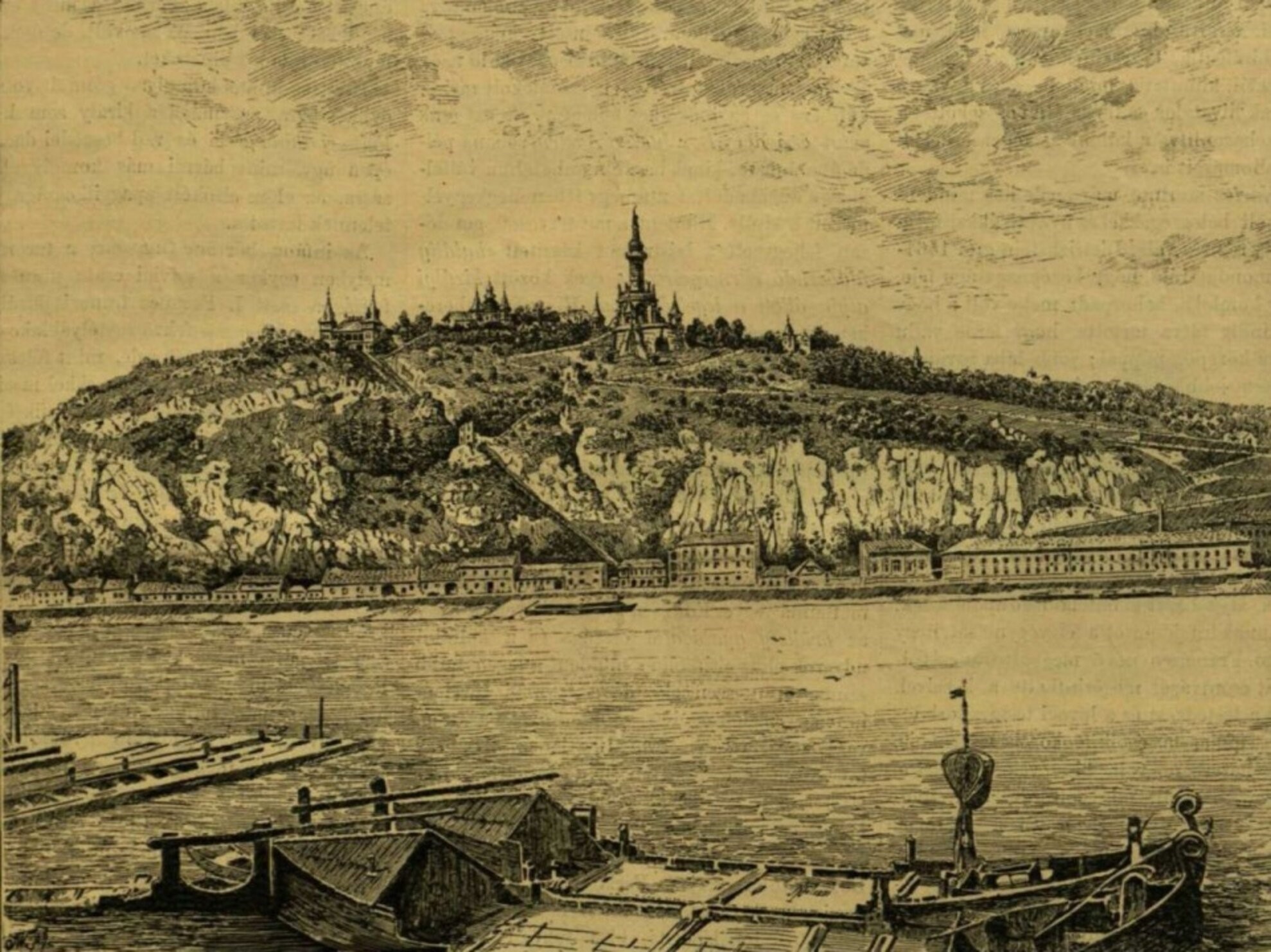
The tramway and buildings planned for Gellért Hill according to the plan of the architect Ferenc Novák (Source: Vasárnapi Ujság, Volume 39, Issue 12)
Despite his activities here, his relationship with his homeland was not severed: as František Novák, he also took an active part in Czech culture as the president of the Czech Society (Česká Beseda) in Budapest. With his financial support, they created the stage of the social association, on which he also staged several pieces. He was also actively involved in the organisation of the Sokol Gymnastics Association. With his wife, Anna Ratzenbeck, whom he married in 1884, he lived during the summer in his hometown, Tábor, where he also had a family villa built.
He used to live in the Hungarian capital at 10 Felsőerdősor Street. He even hosted violinist František Ondříček, the first performer of Dvořák's Violin Concerto, who gave a concert at the Vigado in November 1890. Dvořák originally wrote the competition work for Ellinger's student József Joachim, who, in the spirit of the classical ideal of form, did not feel like performing the work of form-breaking, romantic spirit.
Heirs of Gusztáv Ellinger
Both Gusztáv Ellinger and Ferenc Novák died childless. The violinist's share was inherited by the minor children of the internationally renowned opera singer Jozefa Maleczkyné Ellinger's - one of Gustav Mahler's favourite singers. Among them, Román Maleczky became the general secretary of the Hungarian Football Association and the Budapest Gymnastics Club. The musical tradition was carried on by the other two children, coloratura soprano Bianka Maleczky and Oszkár Maleczky, a baritone known from the records of Otto Klemperer.
Cover: The interior of the Ellinger Palace (Photo: Balázs Both/pestbuda.hu)

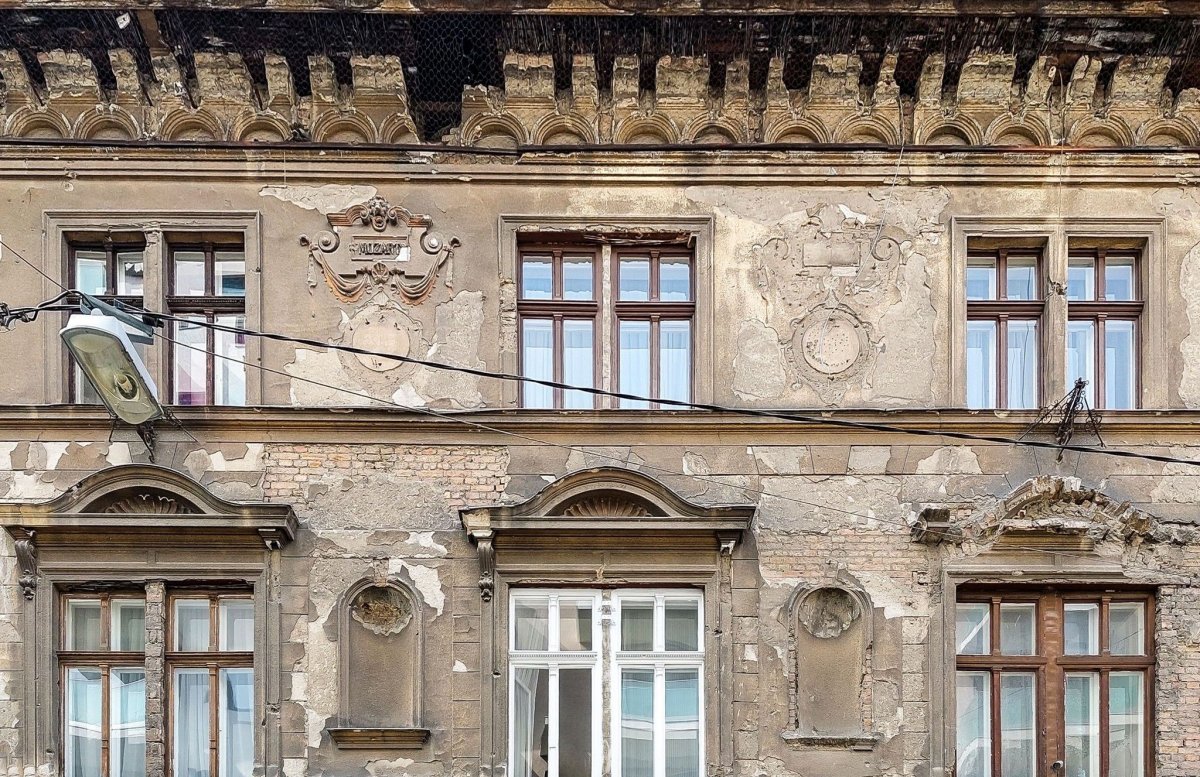


































Hozzászólások
Log in or register to comment!
Login Registration